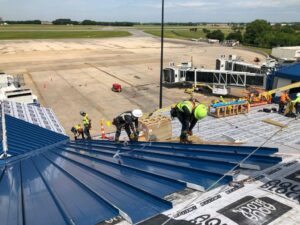Exciting News from Huntsville: Teledyne Brown Engineering Partners with NASA
Huntsville, AL – In a thrilling announcement that showcases the incredible potential of space technology, Teledyne Brown Engineering has been chosen by NASA to support Earth observation initiatives through a new indefinite-delivery/indefinite-quantity contract. This agreement is not just a regular contract; it’s potentially worth a whopping $476 million, and it aims to enhance our understanding of our planet.
What Does This Mean?
The primary goal of this partnership is to improve NASA’s Earth science research. With Teledyne providing cost-effective and commercial-sourced Earth observation data, the possibilities are both exciting and vast. This collaboration will allow scientists and researchers to get their hands on crucial information that can lead to better environmental monitoring and decision-making.
Introducing MUSES: A Game Changer in Earth Observations
Key to Teledyne’s contribution is its innovative platform known as the Multi-User System for Earth Sensing (MUSES). This remarkable system is currently stationed on the International Space Station (ISS) and is specifically designed for a high level of precision in Earth observation.
One of the standout features of MUSES is its ability to host up to four different instruments at the same time. This kind of flexibility means that researchers have a unique advantage when it comes to collecting and analyzing data. Furthermore, MUSES allows for robotic upgrades and servicing, which ensures that we can keep improving our observation capabilities as technology evolves.
Why Earth Observation is Important
The significance of gathering Earth observation data cannot be overstated. This data plays a crucial role in various fields, such as:
- Ocean Monitoring: Keeping an eye on ocean health and currents
- Agriculture: Offering insights to improve crop production
- Forestry: Helping with forest conservation efforts
- Disaster Response: Enabling quicker responses to natural disasters
As Scott Hall, President of Teledyne Brown Engineering, put it, “We are proud to support NASA’s mission to monitor and enhance the planet for future generations.” His words reflect the broader sentiment of responsibility we all share towards our environment and future.
Current Features of MUSES
One of the fascinating pieces of technology currently operating on MUSES is the Earth Sensing Imaging Spectrometer (DESIS). This hyperspectral imager was developed through a collaboration with the German Aerospace Center, and it’s capable of capturing data in ways that traditional imaging systems cannot. This kind of advanced imaging technology is what gives researchers critical information needed to make informed decisions that could positively impact our planet.
Looking Forward
As the project advances, there’s no telling what groundbreaking discoveries await us. The integration of commercial sources of Earth observation data is a unanimous win-win for research and environmental stewardship. With a vibrant blend of technology and science, Teledyne Brown Engineering and NASA are fully geared to push the boundaries of what we know about Earth.
In summary, the collaboration between Huntsville’s own Teledyne Brown Engineering and NASA marks a significant milestone in Earth observation. As we move forward, we can look forward to more exciting updates and results from this innovative project that promises to make a lasting impact on our world’s future!








